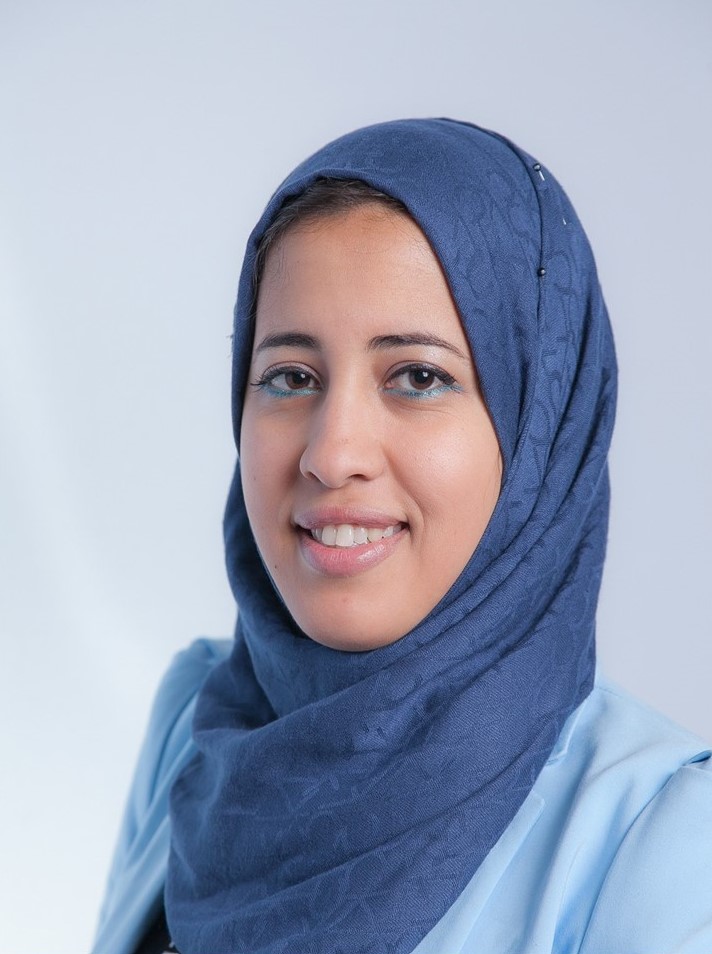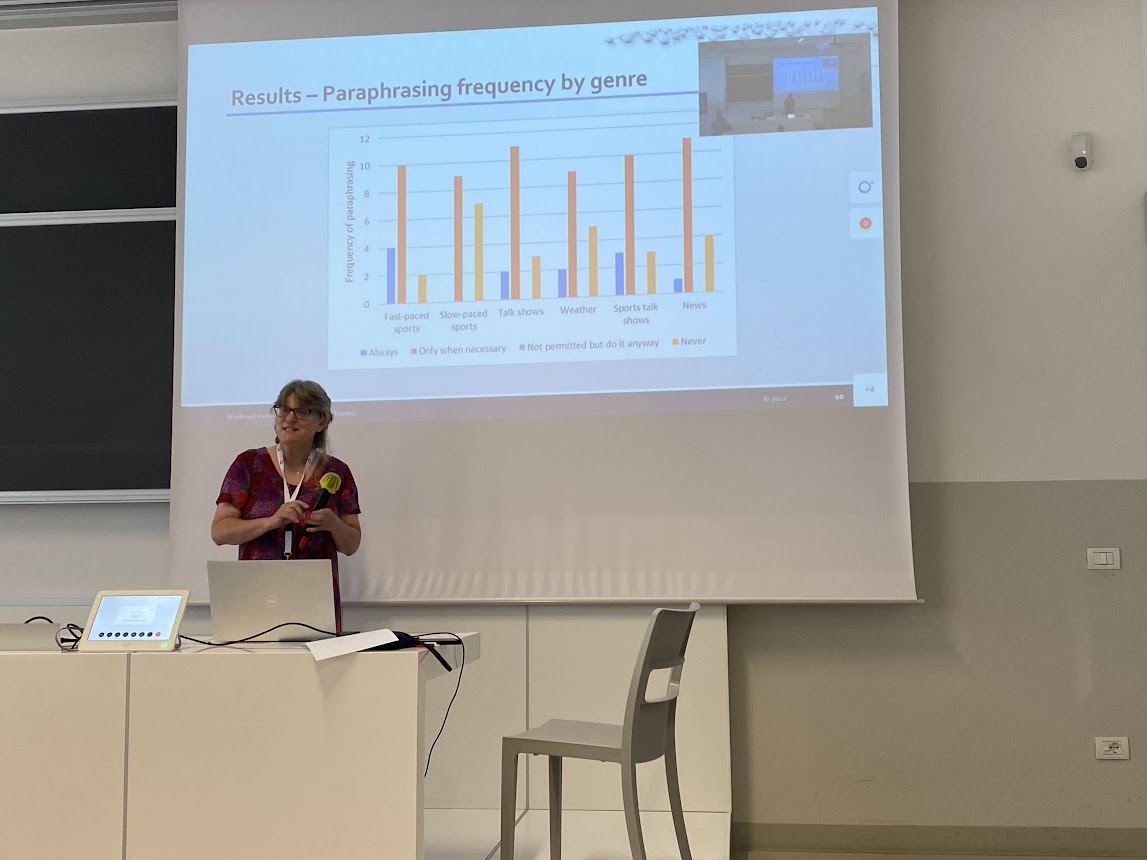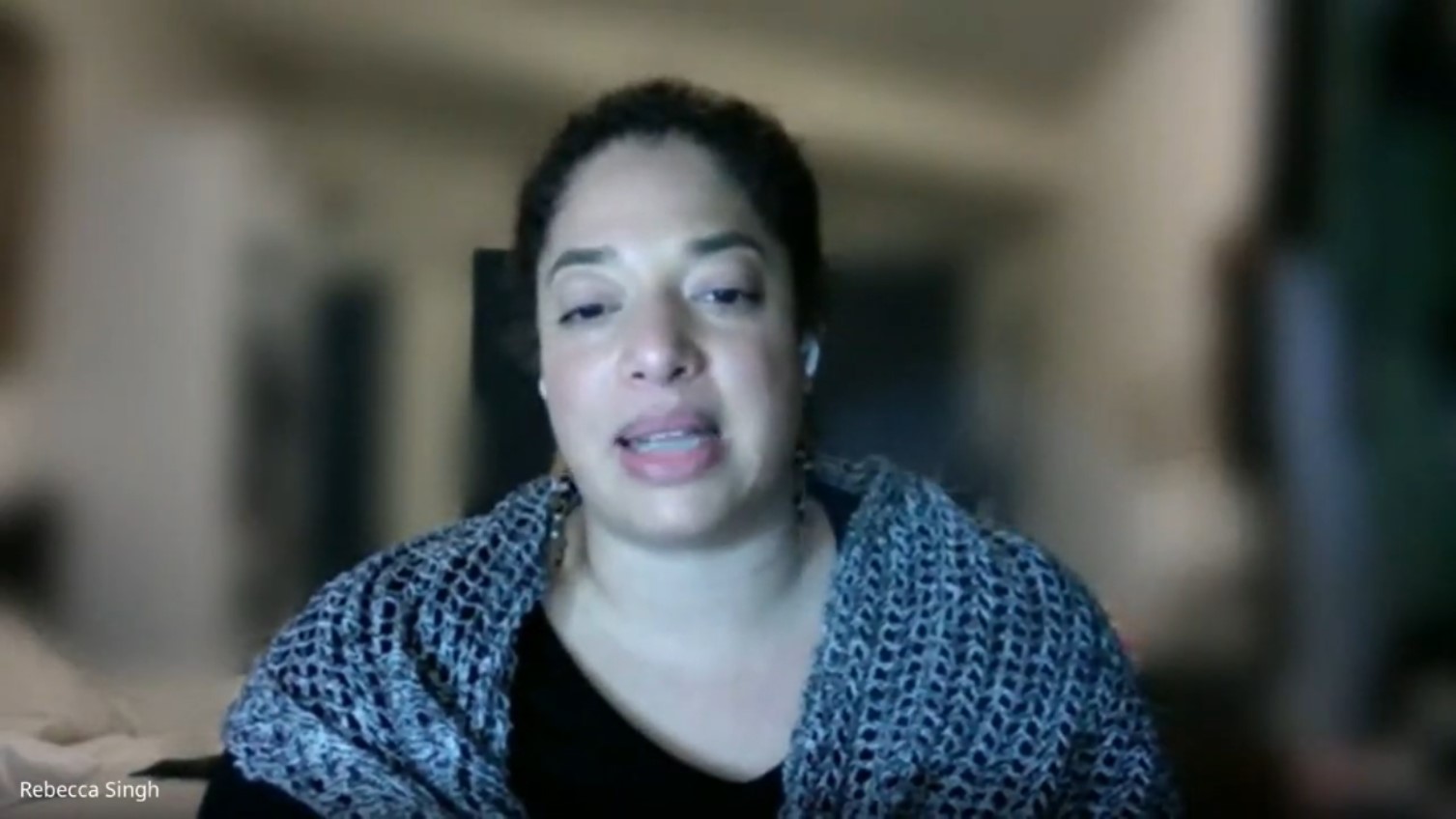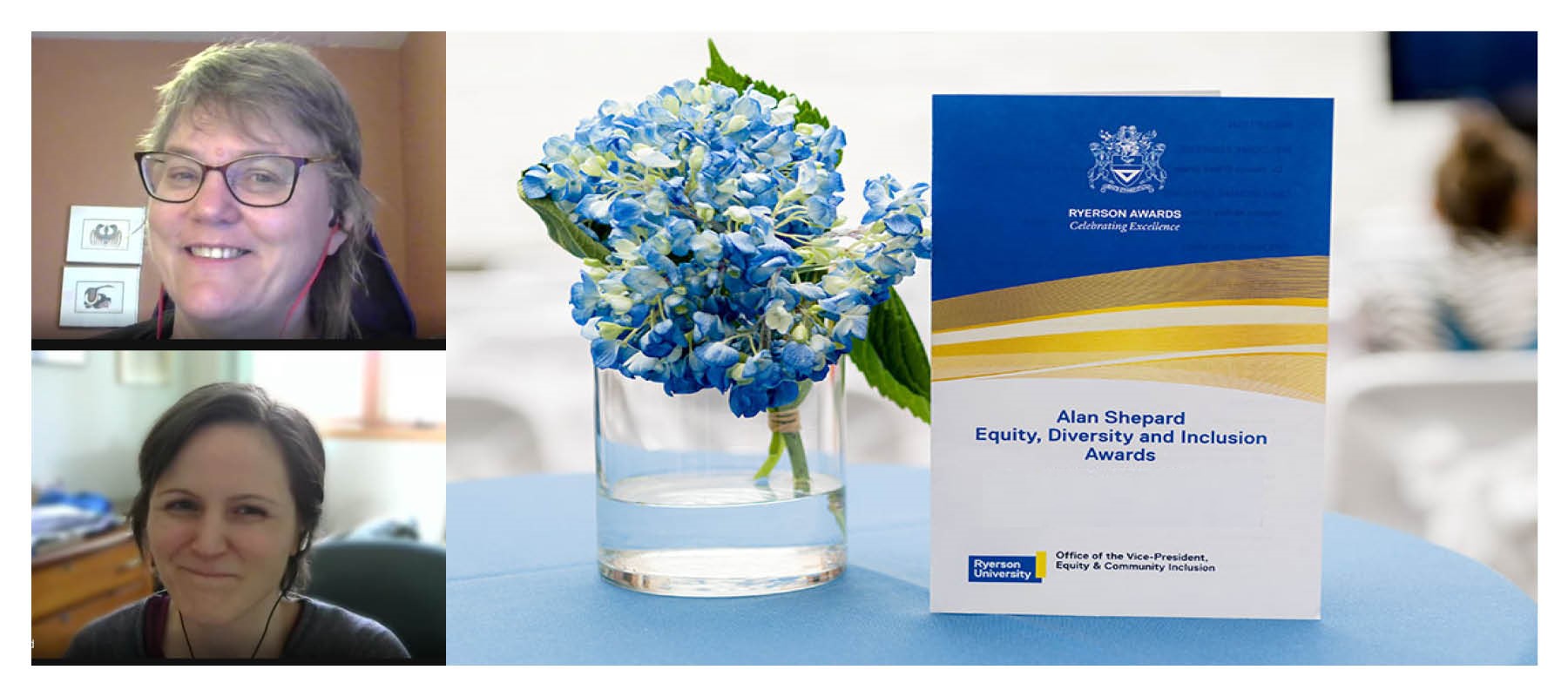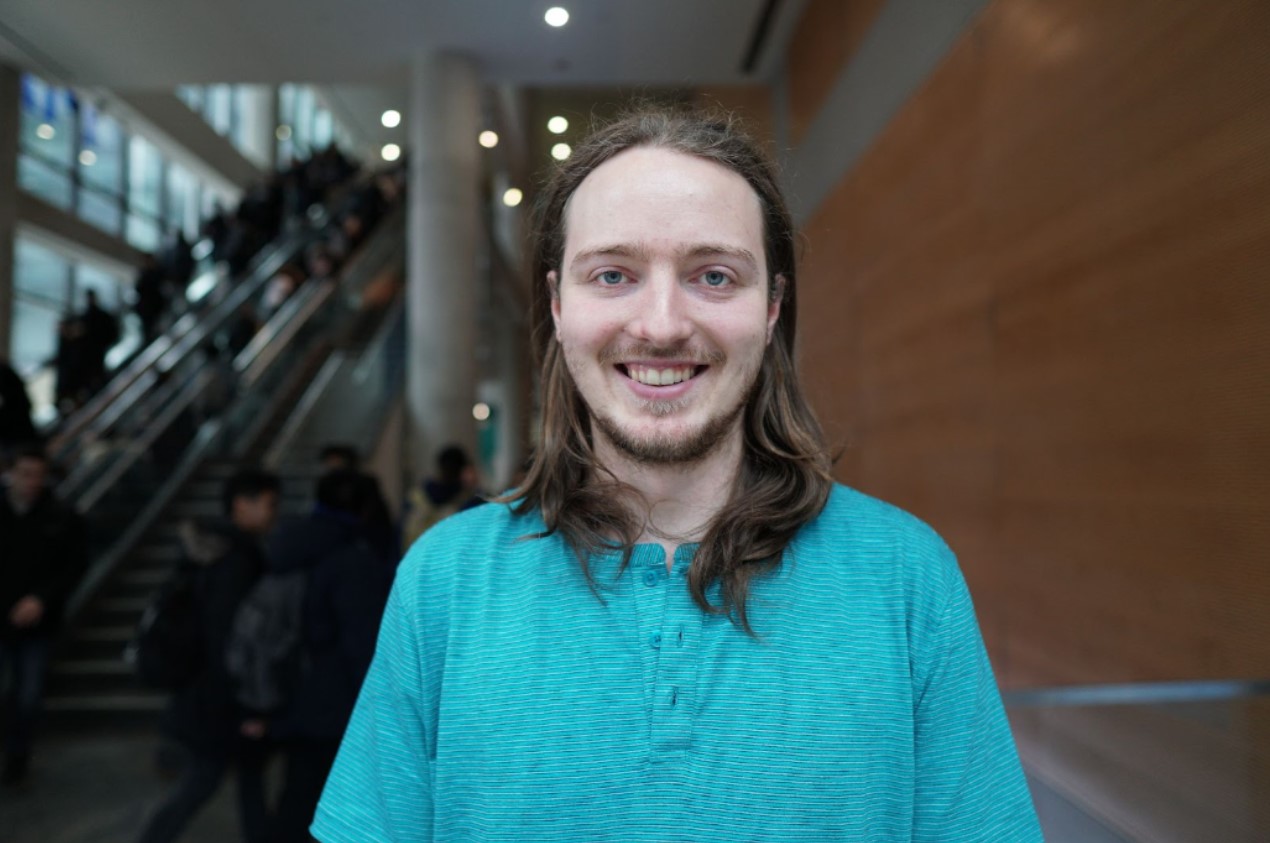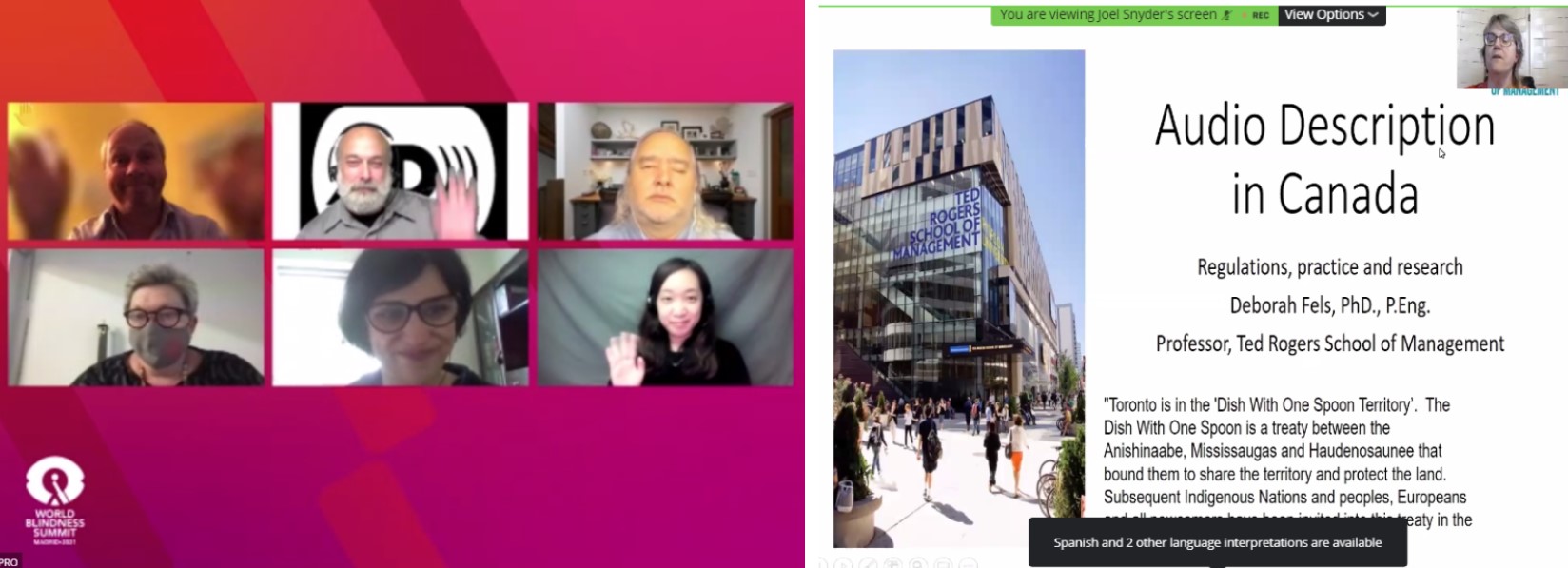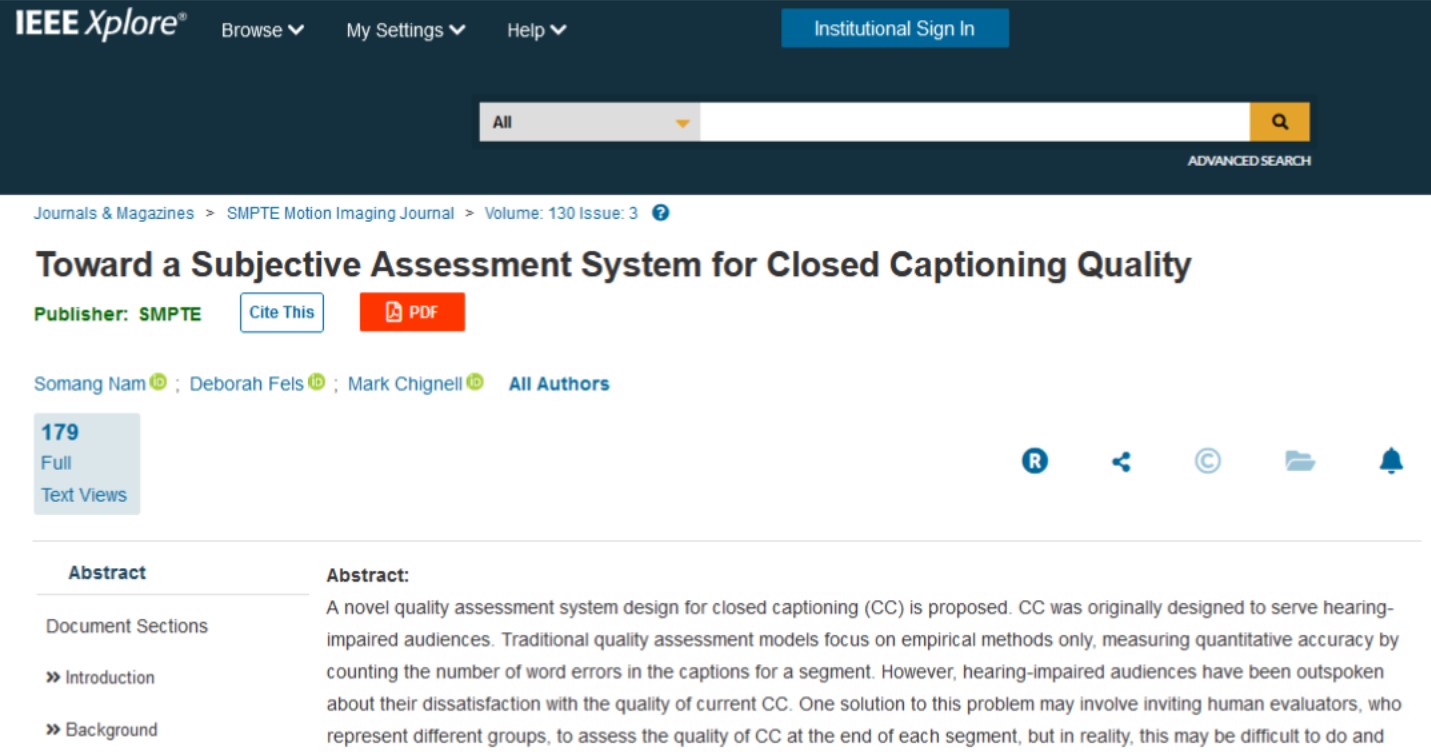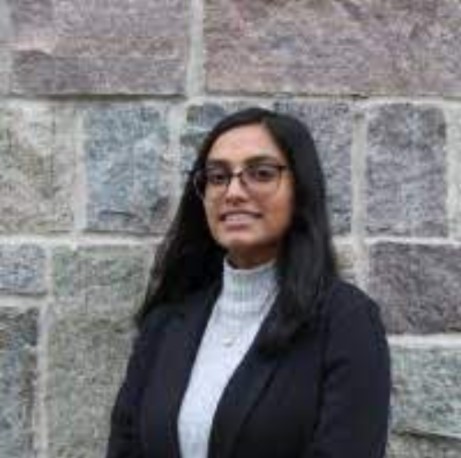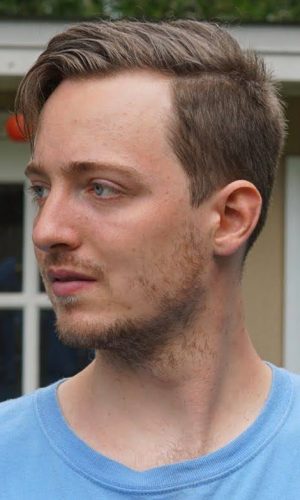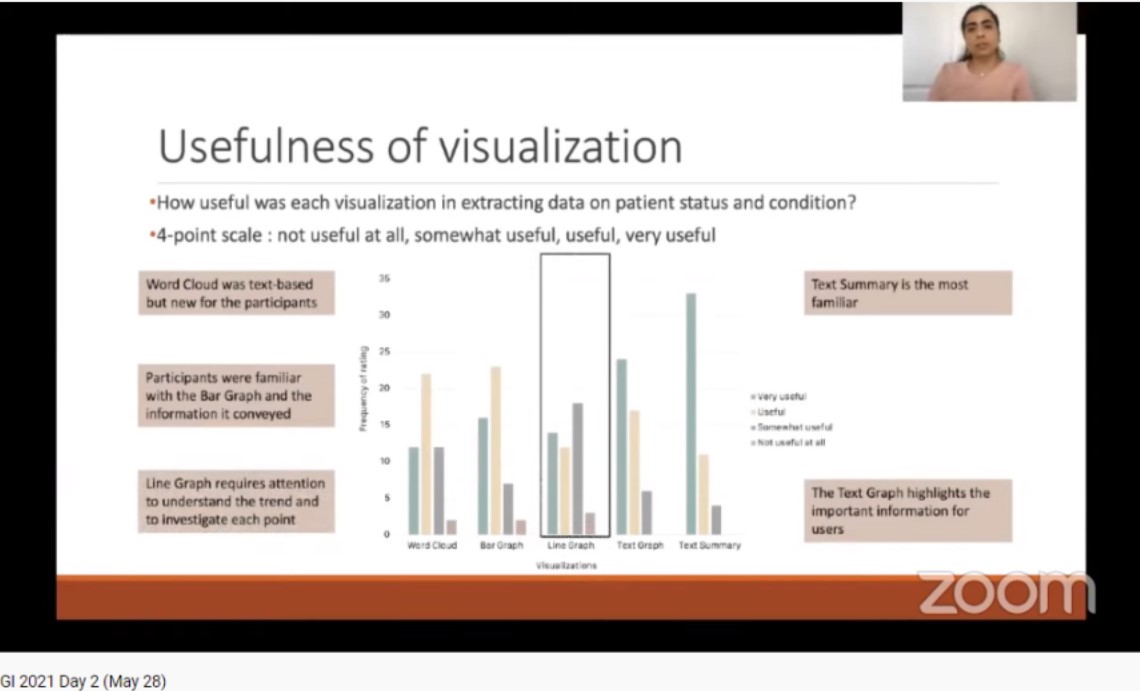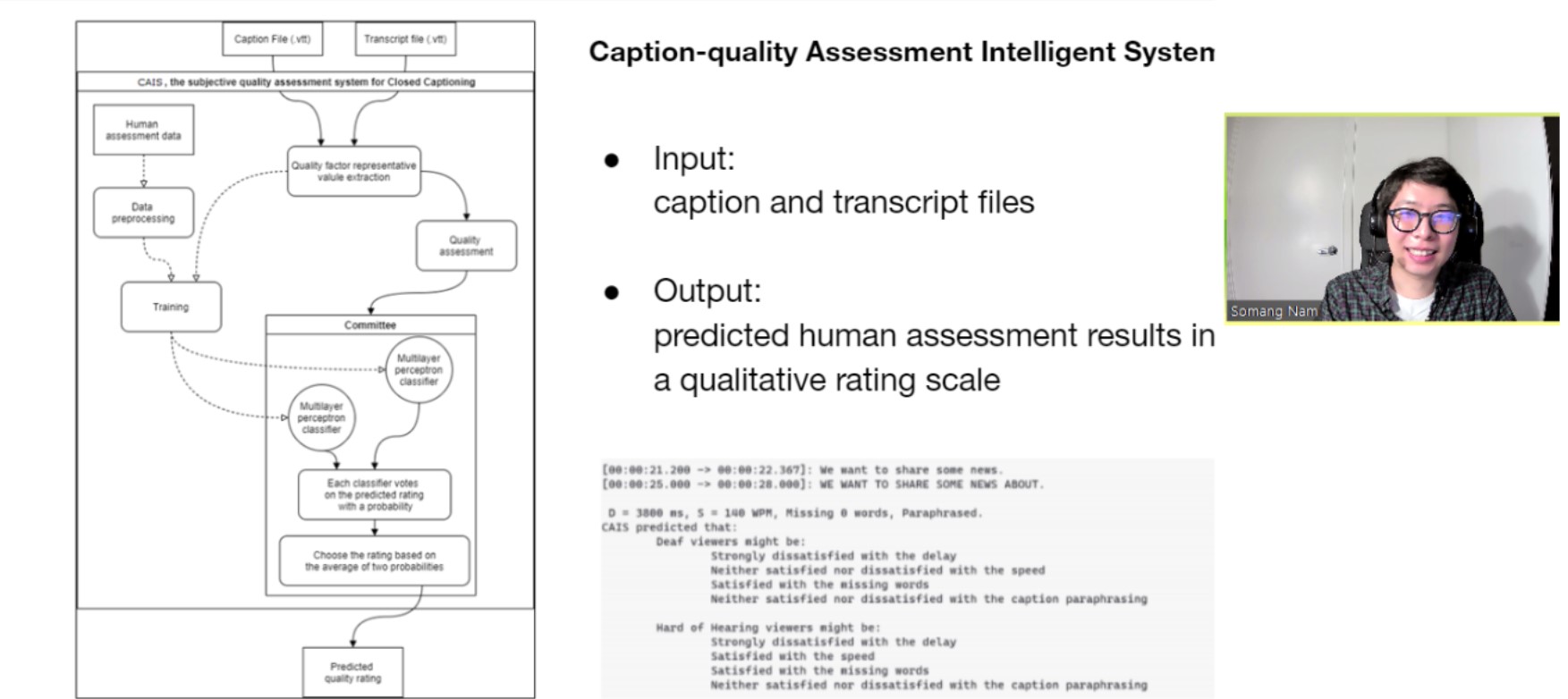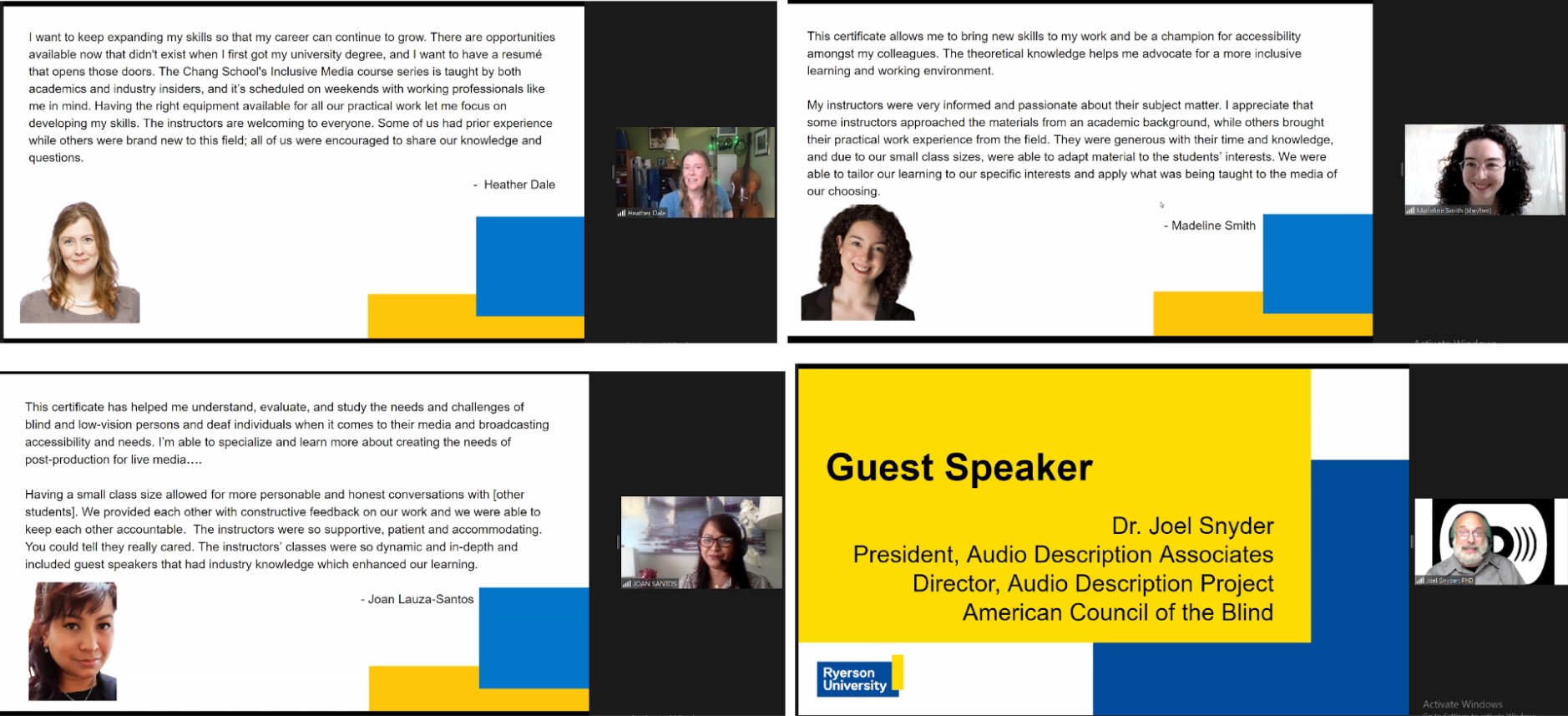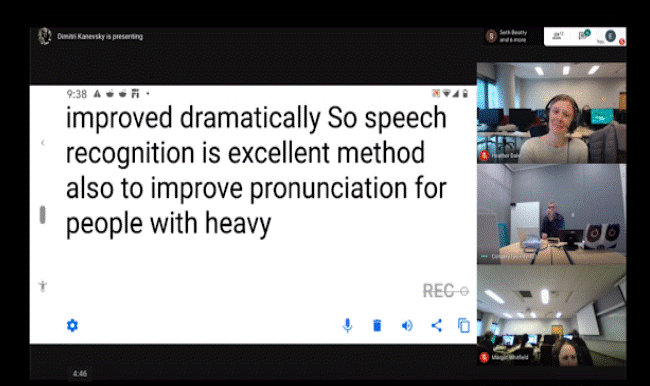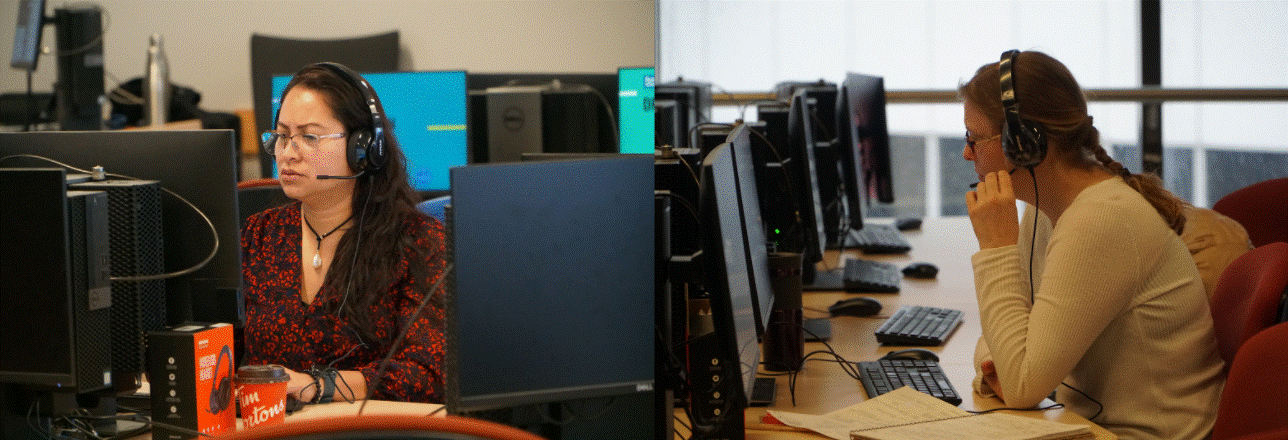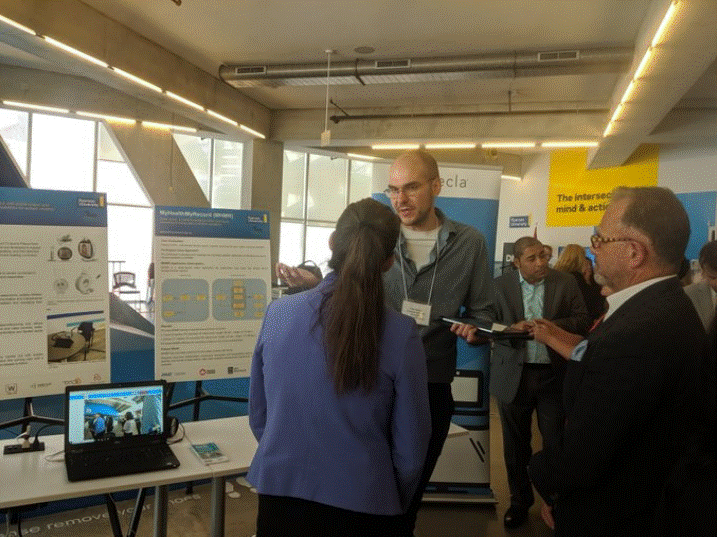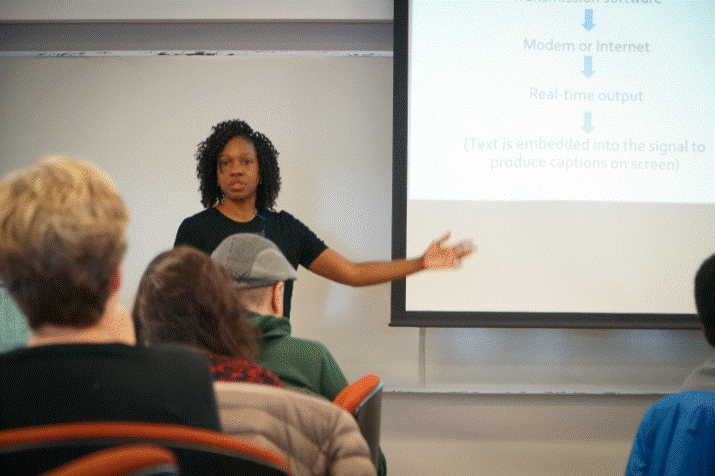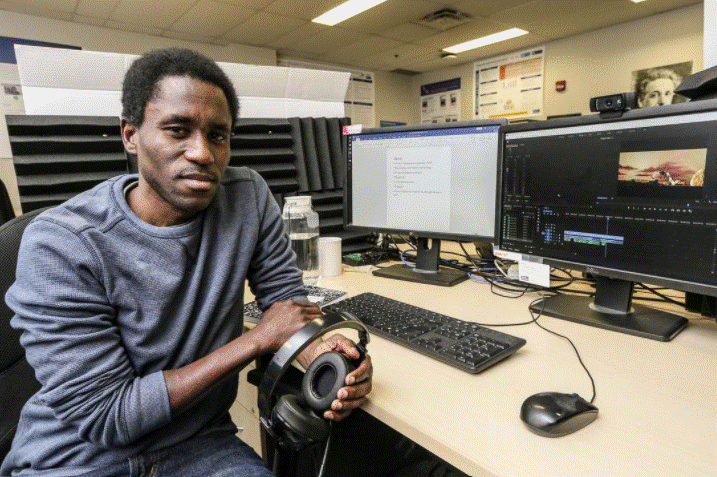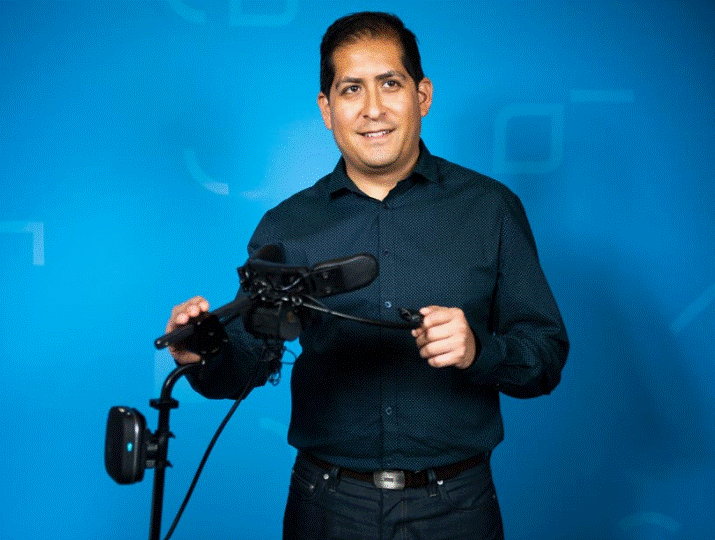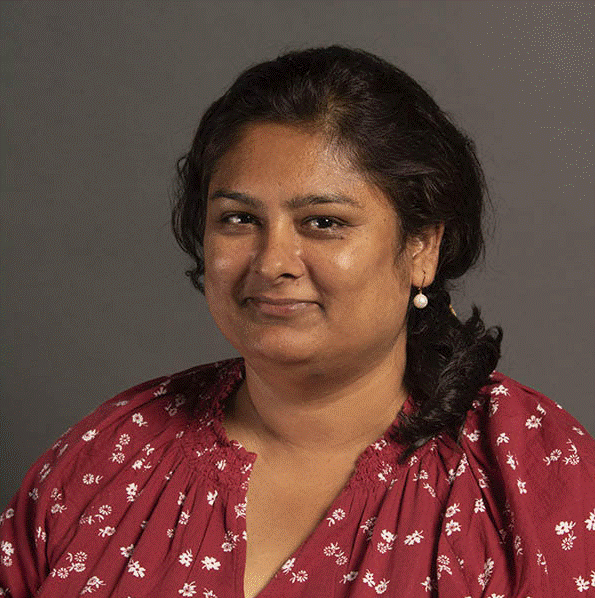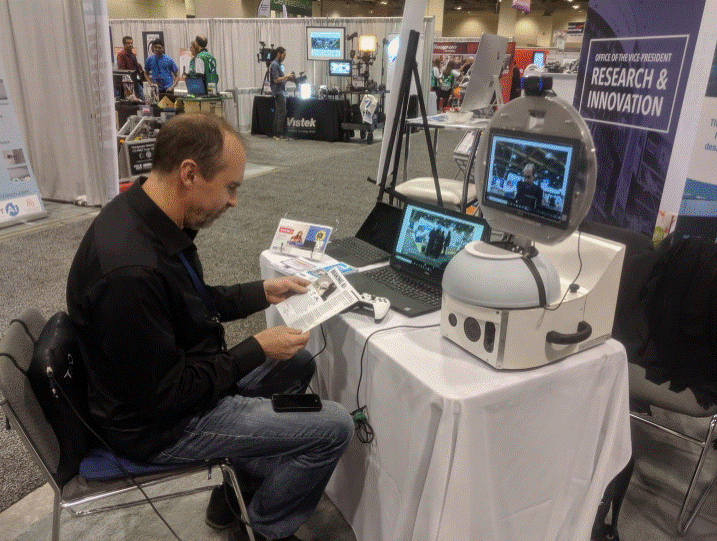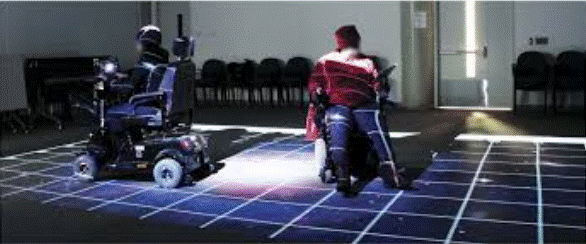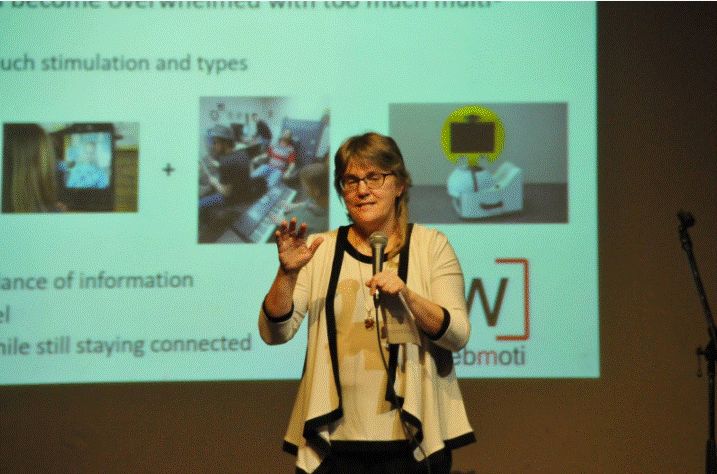Reports
Captioning quality should include D/HoH perceptions in error calculations (external link)
D/HoH viewers perceive emotions more accurately when animated captions (external link) are incorporated
Text-heavy websites are difficult to navigate for D/HoH Signed Language users (external link)
D/HoH listeners understand emotions better when vibrotactile is included (external link)
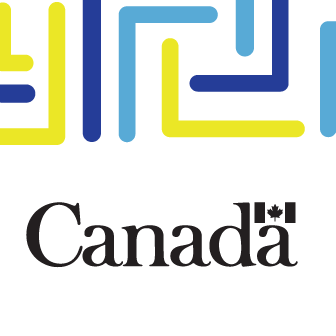
Purpose
The purpose of this final activity report is to provide a summary and evaluation of your project. Use this report to highlight your achievements. Also, explain any challenges you faced carrying out the project. This report is required by your Funding Agreement (the Agreement). This report is due no later than 60 days after the completion of the project.
Recipient and report period
Recipient organization: Toronto Metropolitan University (formerly Ryerson University)
Project title: Understanding user perspectives of the speed/accuracy/delay tradeoff for captioning fast-paced media content: Towards improved quality standards for closed captioning in Canada
Project number: 17324237
Start date of the project (dd/mm/yyyy): 13/10/2020
End date of the project (dd/mm/yyyy): 31/03/2023
Final Activity Report
- List each of the objectives and/or activities stated in your Agreement. Describe the results achieved for each. Use examples and refer to your project’s expected results. Indicate if these results match the expected results stated in your Agreement. Give specific examples to support your answer.
The project’s specific objectives are
- Carry out a comparative study (Study 1) with a set of modified caption accuracy factors and assess the user experience of 30 Deaf and Hard of Hearing (D/HoH) participants for fast-paced live media content for three sports and/or Olympic events with male and female teams, and two talk shows (1 general interest and 1 sports talk show in English). The factors that will be adjusted include play-by-play announcing and commentary versus commentary-only captioning for sports, removing high-frequency versus low-frequency words, and quantity of paraphrasing. Timeline: Years 1 and 2 of the project
- The comparative study was completed successfully with 16 Deaf and 11 HoH participants. The study results enlightened the potential of improving the user experience of the commentary-only version of captioning in fast-paced sports live broadcasting.
- Carry out a longitudinal study (Study 2) with 30 D/HoH users for user preferences indicated from objective 1 to understand the longer-term effects on user experience and quality assessment. It is anticipated that this will be a one to three-month study per participant. Timeline: Years 2 and 3 of the project;
- A longitudinal study based on the findings from Study 1 has been planned to be conducted in Q3 of 2023. An Ethics application was submitted to TMU’s Ethics boards, and currently is waiting for approval.
- Develop and evaluate caption tool enhancements (Study 3) that allow captions to be generated according to the results of objectives 1 and 2. Timeline: Years 2 and 3 of the project;
- A study was conducted with 30 live captioners to learn about their subjective mental workload from the captioning task. The findings were the first of its kind, and the study revealed the need for a solution to mitigate the heavy workload which captioners perceive from the process. An automatic caption tool, PAVOCAT, was implemented to support the captioners in generating live and post-production captions by using machine learning algorithms. A user study with novice and experienced professional captioners is designed and will be conducted in Q2 2023.
- Develop recommendations with appropriate empirical evidence and examples for supporting caption standards and regulation improvement as one policy brief. This will also include the impact on various distribution technologies and processes. Timeline: Year 3 of the project;
- A preliminary set of recommendations was developed based on the results of user studies designed to understand the perspectives of captioners and viewers. Findings revealed evidence and potential solutions to improve caption standards and regulations. These recommendations were written in a technical and academic reports for dissemination.
- Disseminate project findings in two peer review journals or conferences (one peer-reviewed submission will be to an open-source journal that is freely available to all with no need to access a library; open-source journals have a publication cost to authors who have been listed in the project budget), one trade publication and one media release.
- The findings from the comparative study were presented at two international conferences (International Conference on Computers Helping People with Special Needs, 2022 and the International Symposium on Live Subtitling and Accessibility, 2023), and manuscript preparation is in the process to be submitted to a peer-reviewed journal (Behaviour and Information Technology).
- A manuscript was prepared from the findings from the captioner subjective workload study and was submitted to a peer-reviewed journal (Applied Ergonomics).
- Were you able to follow your activity timeline for your project, as stated in your Agreement? If your project was delayed or ahead of schedule, briefly explain why, and what measures you took to adjust your timeline to meet the expected results stated in your Agreement.
- The Covid-19 situation introduced constraints and challenges, making it difficult to conduct the planned in-person user studies and interviews. As a result, the process of study approval was delayed.
- The captioner user study was converted to fully online. Study 1 (comparative study) was conducted in January 2022 in person, however, the ASL interpreters joined virtually.
- The initial delay made every consequent stage of the research delayed.
- What disabilities did your project address? Complete Table 1 to answer this question.
In the Accessible Canada Act (external link) , disability is defined as any impairment or functional limitation, whether permanent, temporary or episodic in nature, or evident or not, that, in interaction with a barrier, hinders a person’s full and equal participation in society. Consult the Act for more information.
Project participants
- Indicate how many people were involved in your project. Include everyone involved in all parts of the planning, design, and delivery of your project (for example, staff, partners, and research team members). Also include research participants (for example survey and focus group participants).
Advisory committee members: 2
Research team members: 3
Research participants: Twenty-eight D/HoH participants for the captioning study plus 40 additional participants planned for 2023-2024.
- Out of the total number of people specified in 2a, how many were involved in the design, planning and delivery of your project (such as staff, partners, members of the research team, etc.)
5
- Out of the total number of people specified in 2a, how many were research participants (such as survey and focus group participants).
28
- Out of the total number of people specified in 2a, how many were people with disabilities?
33
- Explain how people with disabilities were involved in your project and their roles. For each role, briefly list the responsibilities or activities they were involved in. Note that a project participant can be in more than 1 category. Complete Table 2 to answer this question.
- How did you ensure that people with disabilities had a meaningful contribution throughout the project and in their particular role in the research?
- In our projects, a Deaf master's student and a Deaf professor (co-supervisor) were actively involved in every stage of the project, including the design, documentation, execution, and analysis of all conducted studies.
- Three advisory members were members of the D/HoH communities.
- Was the project led by a disability or accessibility organization or community? If yes, please provide details.
No, but Canadian Hearing Services did distribute the study recruitment flyer.
- Did a person with a disability act as the project lead? If yes, please provide details.
- Throughout the study, a Deaf master's student played a dynamic role by actively participating in all aspects of the research design, including conducting face-to-face interviews for the study. For example, she created the ASL recruitment videos so that the study was made more accessible to ASL users.
- In addition to people with disabilities, we encouraged the involvement of diverse groups of people in research projects. Please indicate how many people from each category listed below were engaged in your project. Note that a project participant can be in more than 1 category. Complete Table 3 to answer this question.
Did you reach the participation level you expected for your project? If not, please provide an explanation for any discrepancy.
- We did not meet our expected participation level in the live captioning study (28 of 40) nor the captioner study (28 of 30). However, these levels provided sufficient numbers to perform statistical and thematic analyses, and come to transferable conclusions.
Partnerships and collaborations
- Describe all partnerships that you engaged in this project. Indicate the names of your partners, the sector or discipline they represented, and a brief description of their role in the project.
- Corus, broadcaster, Advisory Board Member
- Rogers, broadcaster, Advisory Board Member
- CBC, broadcaster, provided video content to use for user evaluations
- Canadian Hearing Services, recruitment dissemination
- Canadian Hard of Hearing Association, Community Organization, Advisory Board Member
- Jim Roots, member of Deaf community
- Canadian Association of the Deaf, Community Organization, Advisory Board Member
- Brook Woboditsch, CCS Inc., Captioning company, Advisory Board Member
- 3-Play Media (formerly National Captioning Institute), Captioning company, Advisory Board Member
- Media Access Canada, Captioning policy company, Advisory Board Member
- Nazaret Fresno, Scientific advisor
- Evan Hibbard, Academic partner, co-supervisor MScM thesis based on project
- PAVO, captioning technology company, providing access to PavoCat software
- Indicate if some planned partnerships did not take place. Explain how this affected your project results. Give specific examples to support your answer.
All planned partnerships occurred in this project. A new partnership with Deaf professor, Evan Hibbard, arose directly from this project. He was able to provide a Deaf academic perspective to the project and co-supervisory guidance in academic ASL for the Deaf Master’s student.
- Explain how your project partners helped establish a national network of accessibility expertise.
Some of the project partners, Rogers, CBC, Corus, 3Play Media, Brook Woboditsch, Media Access Canada represent pan-Canadian interests and as such, offer a national perspective and network. Other partners, Jim Roots, are individuals with in-depth knowledge and experience in managing pan-Canadian interests. Still others, e.g., Nazaret Fresno and Evan Hibbard, are internationally based and have allowed us to expand the network beyond Canada into the US and the EU.
- Explain how your project partners helped foster the participation of people with disabilities in the research agenda.
People with disabilities are integral members of the research team, and advisory board. The advisory board provides leadership for, direction to and input into the research agenda. They also require the research team to be accountable to their directives. Deaf research team members ensure that Deaf culture values and perspectives are prioritized in the research as well as driving procedures to be accessible and Deaf focused. Finally, the research provides opportunities to train new researchers with disabilities; an important aspect of this project.
- Explain how each partner helped ensure the project was informed by sound evidence.
Partners were provided with reports, information and presentations during meetings for comment and scrutiny. In addition, some partners wanted to be pilot participants to gain detailed knowledge of how the studies were designed and implemented.
Semi-annual meetings that included all project partners were held so that individuals could question, discuss and offer advice to research team members. This was particularly important for students to learn how to present to an advisory board, and for advisory members to meet the students involved in the project.
- In working with your partner or partners, describe what worked well, and what proved to be challenging.
- The project was executed smoothly and effectively with active participation from all partners, resulting in a highly positive outcome.
- The COVID-19 pandemic caused a slow down for all of the in-person activities for the project. We were able to reorganize the activity order to carry out some of the project virtually but needed to delay all of the in-person activities until 2022-2024.
- If some project funding was allocated to a partner or other collaborator, indicate the partner, the amount and the nature of the collaboration. Explain how this relates to your project activities.
Expected results
- Funding recipients are required to publicly share their research report in both official languages and in an accessible format. Describe the ways you did this and with whom it was shared. Also, provide the URL where it can be accessed online.
see: http://www.livecaptioningcanada.ca/index.TLC.html
- In addition to the research report, describe what other materials you have published or plan to publish. List the total number and type of publication. Indicate what you had planned, if you have submitted content for publication, and if some content is already published. Use Table 4 to answer this question.
Final thoughts
- Describe the success of your project in the area of accessibility. Consider factors such as how the project has:
- introduced new or innovative ways of approaching accessibility. For example, by identifying:
- new ways of integrating IT technology into disability tools
- new best practices for inclusion in an accessibility standard
- developed new connections or partnerships with people with disabilities and others in accessibility fields or other sectors
- helped establish new research networks on Indigenous accessibility issues, including using culturally appropriate methods, such as talking circles.
- generated interest from, or opened a dialogue with, other jurisdictions
- developed partnerships with academia that have accessibility-related programming
The project has made great strides in a number of areas:
- Understanding the issues involved in captioning fast-paced live sports from live captioner’s and viewer’s perspectives with evidence gathered from two user studies. This project is the first in the world to evaluate the impact of live captioning work, including paraphrasing, on a captioner’s mental workload. In addition, it is the first in the world to find novel ways to improve the fast-paced live captioning process for humans. A third contribution will be available during the extended phase of this project, that of the impact of machine learning on the generation of fast-paced captions, the transition for human captioners from typist to supervisor, and the resulting impact on D/HoH viewers. This has all been accomplished with advice and scrutiny from D/HoH community members and organizations, captioning industry and Canadian broadcasters.
- We are being recognized through invitations to academic, industry and community venues, national and international, as leading innovative research and producing novel ways to improve caption quality for fast-paced broadcast content.
- Beginning the process of affecting captioning policy. We have been asked to present our findings to the Canadian Association of Broadcasters committee responsible for reporting to the CRTC, and affecting change in caption policy.
- Training the next generation of researchers with disabilities through graduate work associated with this project. Also, training the next generation of staff and students on inclusive research, project management and work practices.
- Provide any other information about your project that you wish to share.
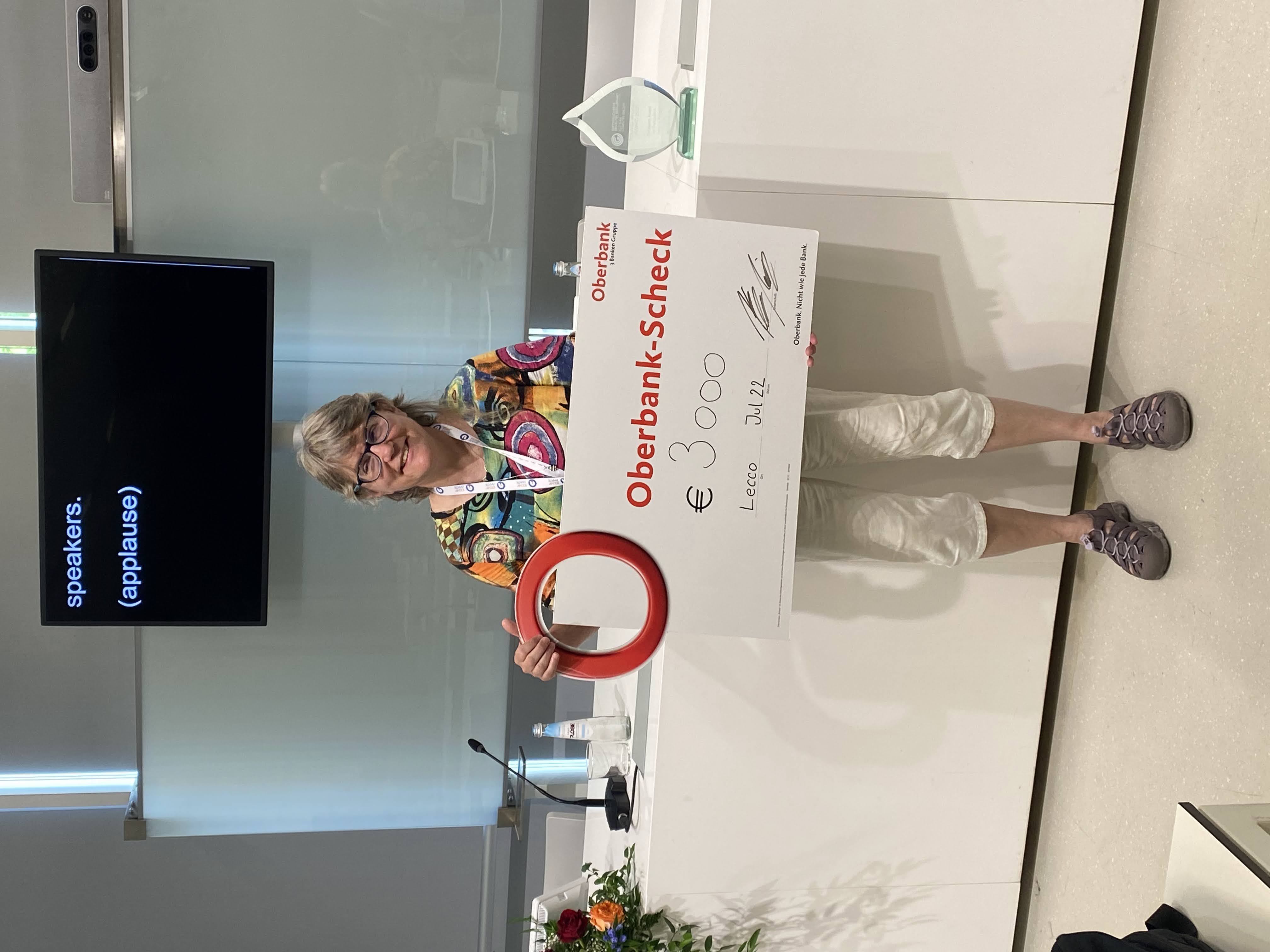
This Year in Review- Highlights
The 2022/2023 was a reasonably productive year with some research achievements. However, COVID-19’s impact on
flexible work policy and protocols continues to have an negative impact on research productivity.
Specific progress included:
1) Somang Nam was hired as a postdoctoral fellow, and Christie Christelis, project coordinator, and their team
produced a final report on the "Understanding user perspectives of the speed/accuracy/delay trade-off for
captioning fast-paced media content" for the committee advisory members and other influential
stakeholders.
2) Somang Nam (PhD) collaborated with us on a successful grant application with our industry partner, PAVO for
the Broadcast Accessibility Fund (BAF) and is also pursuing partnerships with other research labs.
3) Abidin Akkok, PhD candidate, returned from his leave in January 2022 but a fourth leave of absence was
rejected and he has left the program.
4) Hemanshu Bhargav (MASc) and Fathima Lakha (former postdoctoral fellow) continue to work a grant project
(MyHealthMyRecord in collaboration with Hadi Shojei at the Northern School of Medicine).
5) Tanzina Mahbub (MScM) completed her user-studies in the summer of 2021. Currently she is analyzing these
data and will defend her thesis in Fall 2023.
6) Mehnaz Aydemir successfully completed her first year in the Media Design and Innovation PhD Program at
Toronto Metropolitan University (TMU) and continues to work in our lab on the WebMoti Project.
7) Shazra Asmy successfully completed her first year in the MScM Program and works in our lab on the WebMoti
Project.
8) Amira Ghenai, Assistant Professor at Ted Rogers School of Management at TMU and IMDC member on the
WebMoti project went on maternity leave and is expected to return to work in Spring/Summer 2023.
9) Jenny Leung, MScM student, has successfully completed her third year of studies with us and is focusing her
thesis on the "Understanding user perspectives of the speed/accuracy/delay trade-off for captioning
fast-paced media content" funded project. Evan Hibbard, PhD, is her co-supervisor.
10) Tatyana Kumarasamy won the EDI, Access, & Mutual Respect Career Boost Award (Spring 2023).
All students are working on projects related to research funded by the various partners.
From a funding perspective, a number of external grant proposals were submitted. Awarded grants include eBound
(lead partner CNIB); LOI from The Chronic Pain Centre of Excellence for Canadian Veterans - proposal due in August
2023. Rejected proposals included: Veterans Affairs; Accessible Technology Program; and NSERC Alliance. One LOI for
and one proposal from NOSM was awarded. We will continue to apply for specific funding including an international
Alliance grant with an identified Japanese partner. We also anticipate that the Canadian Media Fund research funding
program and the Broadcast Accessibility Fund program will be re-started in 2024.
Publications were maintained at a reasonable level with two journal articles published, and four submitted. Six
conference papers were also accepted and presented at various conferences. D. Fels was awarded the prestigious
Roland Wagner award in Computer Science by the Austrian Computer Society. In addition two students associated
with the IMDC won TMU for EDI and The book that began in 2018/2019 remains under development but completion
is expected by the summer of 2023. All publications have student and collaboration partners as authors.
Fels was the Co-Chair of Young Researchers Consortium for ICCHP 2022. Fels participated in reviewing numerous
grant, journal and conference submissions including NSERC, SSHRC, Age-Well, Universal Access to the Information
Society (UAIS) Journal, CHI 2023, International Journal of Human-Computer Studies. She is also on the editorial board
for UAIS and has accepted a second editorial position for the JMIR Rehabilitation and Assistive Technologies.
3
Finally, technology transfer/knowledge mobilization activities for the IMDC were very busy. Fels also continued to sit
on the Steering Committee for Understanding User Responses to Live Closed Captioning in Canada (since 2016). The
IMDC continued the development, in partnership with Mediac Inc., a Canadian captioning tool that incorporates
CEA708 functionalities into its modular design. Lastly, the IMDC is participating in efforts by the American Council for
the Blind in developing a certification process for audio describers; Dr. Fels continues in the role of co-chair of the
Body of Knowledge sub-committee and exam question developer. It is expected that the certification will be available
in 2025.
The impact of COVID-19 continues to have considerable impact on the activities of the IMDC, particularly in relation to
collaboration and flexibility in working conditions. Although there is an expectation that employees come to campus 5
days a week, for some employees, this remains unfeasible.
The momentum of the initiation of the Course Series has been stagnant for the 2022/2023 year. We are working with
Chang School's Michael Carter and Jessica Cammaert along with our industry contacts for a relaunch of the program in
fall 2023 or winter 2024 with some updated presentations to broadcasters (expected fall 2023) for greater
dissemination within the industry. For current information visit our course website at
8.
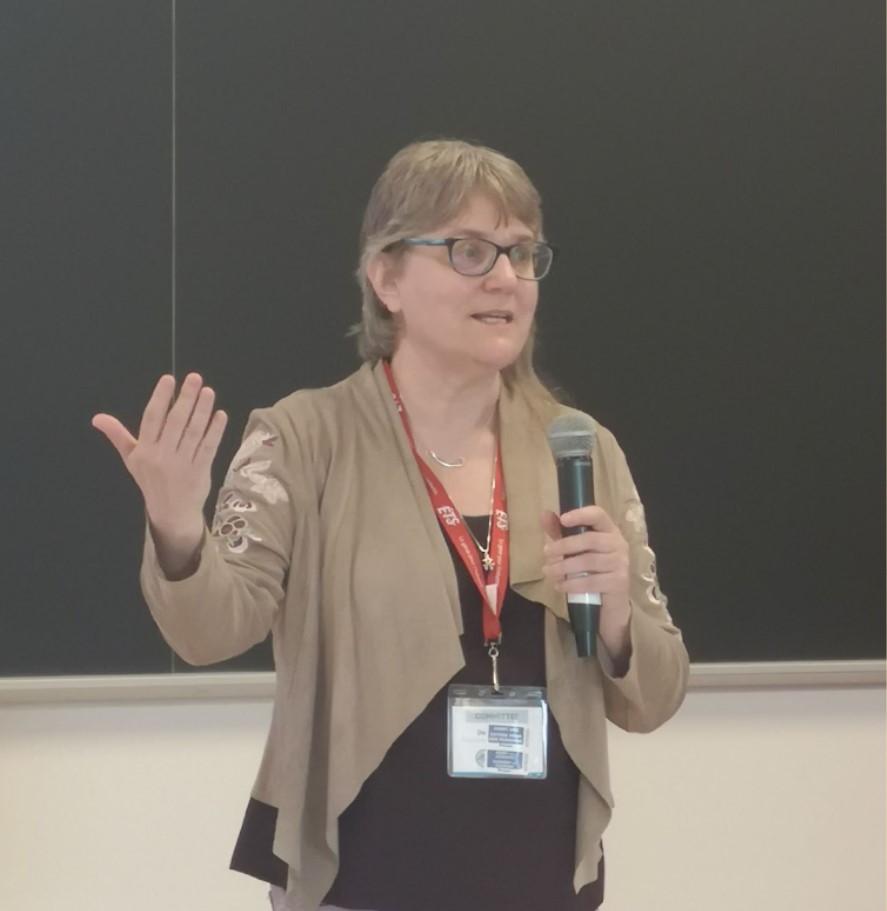
The 2021/2022 was a reasonably productive year with little staff turnover leading to some research achievements. However, COVID-19 limitations and concerns continued to impose severe restrictions on our ability to carry out in-person user studies until early winter/spring of 2022..
Specific progress included:
- Maria Karam, a postdoctoral fellow, and Christie Christelis, project coordinator, and their team continue to work on the "Understanding user perspectives of the speed/accuracy/delay tradeoff for captioning fast-paced media content" project funded by the Canadian Accessibility Standards Development Organization.
- Somang Nam (MSc) obtained his PhD in the fall of 2021, but continues to work collaboratively with us on successful grant applications (such as the BAF) and research projects.
- Abidin Akkok, PhD candidate, returned from his leave in January 2022.
- Hemanshu Bhargav (MASc) and Fathima Lakha (former postdoctoral fellow) continue to work on grant projects (Tecla with industry partner Mauricio Meza and MyHealthMyRecord in collaboration with Hadi Shojei at the Northern School of MedicineHCP respectively).
- Sara Mustafa (MScM) successfully defended her thesis in January 2022, while Tanzina Mahbub (MScM) completed her user-studies in the summer of 2021. Currently she is analyzing these data and will defend her thesis in Fall 2022.
- Mehnaz Aydemir has been accepted into the Media Design and Innovation PhD Program at Toronto Metropolitan University (TMU) and continues to work in our lab on the WebMoti Project.
- Shazra Asmy has been accepted into the MScM Program and will be working with us on one of our research projects.
- Amira Ghenai was hired as an Assistant Professor at Ted Rogers School of Management at TMU and joined the IMDC beginning winter 2022 to assist with the WebMoti project. Her research interests include accessibility for older adults.
- Jenny Leung, MScM student, has successfully completed her second year of studies with us and is focusing her thesis on the "Understanding user perspectives of the speed/accuracy/delay tradeoff for captioning fast-paced media content" funded project. Evan Hibbard, PhD, has agreed to co-supervise her.
All students are working on projects related to research funded by the various partners.
From a funding perspective, four full funding grant proposals (2x Broadcast Accessibility Fund 2021 and one NOSM), and three letters of intent (LOI) (2 BAF - 2022 and one NSERC Horizon - 2022) were submitted to external funding agencies. Two LOIs from the Broadcast Accessibility Fund were selected to progress to the next stage for Summer 2022, and the. Both 2021 BAF funding applications and the NSERC Alliance Missions grant application were rejected. The Northern Ontario Medical grant was awarded.
Publications were maintained at a reasonable level with five journal articles published, and two submitted. Five conference papers were also accepted and presented at various conferences. The book that began in 2018/2019 remains under development but completion is expected by the end of 2022. All publications have student and collaboration partners as authors.
Fels is the Co-Chair of Young Researchers Consortium for ICCHP 2022. Fels participated in reviewing numerous grant, journal and conference submissions including NSERC, SSHRC, Age-Well, Universal Access to the Information Society (UAIS) Journal, CHI 2021, ICT4AGW (ICT for Aging Well). She is also on the editorial board for UAIS and has accepted a second editorial position for the JMIR Rehabilitation and Assistive Technologies.
Finally, technology transfer/knowledge mobilization activities for the IMDC were very busy. Fels also continued to sit on the Steering Committee for Understanding User Responses to Live Closed Captioning in Canada (since 2016). The IMDC continued the development, in partnership with Mediac Inc., a Canadian captioning tool that incorporates CEA708 functionalities into its modular design. Lastly, the IMDC is participating in efforts by the American Council for the Blind in developing a certification process for audio describers; Dr. Fels continues in the role of co-chair of the Body of Knowledge sub-committee and exam question developer. It is expected that the certification will be available in 2025.
The impact of COVID-19 (and the Omicron variant) continues to have considerable impact on the activities of the IMDC, particularly in relation to human participant testing. Although some of our user studies have been successfully migrated to a virtual environment, others have commenced and been proposed again (as was the case with the Play by Play study) or are waiting for permission to proceed (as is the case with the Tecla studies with vulnerable people).
A limited number of students requiring access to on-site technologies and resources were permitted to return to the lab in the fall of 2021. Some of our international student employees (CBI) were working remotely via their respective counties of origin, due to vaccination and travel restrictions/access. A sudden and unexpected concern over the Omicron variant resulted in the suspension of our Play by Play study and study booking from mid December 2021 to February 1, 2022. SRC planning was not aligned with broader campus policies around instructional space until February 2022. In February, 2022, the university issued a New Flexible Work Policy, which helped address some of the issues relating to permits to live outside the province, health and safety standards, privacy and data security as well as ownership of equipment and property.
Our Course Series continues to be modified by the disruption of the pandemic. Online course delivery has not resumed since the fall of 2021, however, we are expecting to relaunch our series with some courses to be offered in-person (CDIM 101 and 102). Our CDIM 101 instructor (Andrea Ducent) is being replaced by Josie McKenzie and Joanne Pak, and Margot Whitfield will continue instructing the courses. For current information visit our course website at https://continuing.ryerson.ca/public/category/courseCategoryCertificateProfile.do?method=load&certificateId=281328.

The 2020/2021 was a productive year that saw some new directions and exciting research. Maria Karam, a postdoctoral fellow, was hired in the fall to work on a captioning project funded by the Canadian Accessibility Standards Development Organization. Christie Christelis, with over 30 years of experience in the field of accessibility, also joined the captioning project as a part-time project manager.
At Ryerson, Somang Nam (MSc) continued his PhD, while Abidin Akkok was approved for a one year leave of absence; Somang Nam's presentation at the U of T Engineering Research Conference (UTERC) in July of 2021 won second place in Data Analytics, Al & Robotics group. He also successfully published his work in IEEE Transactions on computational social systems and is expected to defend his thesis this fall (2021). Former Career Boost Student, Hemanshu Bhargav, began his MASc masters program with us in the winter of 2021. He and Shazra Asmy (research intern from Ontario Tech University) presented at the ICCHP (2020) and Rabia Tanvir, Industrial Engineering at the University of Toronto, presented at the Graphic Interface Conference (2021). In August 2021, Rabia Tanvir, successfully defended her masters. MSCM students, Sara Mustafa and Tanzina Mahbub, continued working on completing their theses. Our visiting scholar, Jia Zhao, a film-maker, returned to China in July. One research associate, Shehnaz Fatima Lakha continued through 2021 working on a MyHealthMyRecord in collaboration with Hadi Shojei at the Northern School of Medicine. User studies were conducted with health care professionals and patients in summer 2021.
From a funding perspective, nine full funding grant proposals and four letters of intent (LOI) were submitted to external funding agencies. One funding proposal from the Broadcast Accessibility Fund, one from the Accessible Technology fund, one from the NCE: Canadian Frailty Network, and one proposal from the Accessible Technology program were successful to date and two LOls were selected to progress to the full proposal stage. Pending notifications include: two from the Broadcast Accessibility Fund, and one from the New Frontiers Innovation program. Notification for the pending funding proposals is expected in Fall 2021. All applications were with multiple partners. Fels was a lead on seven funding applications and two LOls. Publications were maintained at an excellent level with four journal articles published, and one submitted. Six conference papers were also accepted and presented at various conferences. The book that began in 2018/2019 remains under development but completion is expected by the end of 2022. All publications have student and collaboration partners as authors. Fels was the Co-Chair of Young Researchers Consortium for ICCHP 2021. Fels also participated in reviewing numerous grant, journal and conference submissions including NSERC, SSHRC, Age-Well, Universal Access to the Information Society (UAIS) Journal, Pattern Recognition and Analysis, CHI 2020, ICT4AGW (ICT for Aging Well). She also remained on the editorial board for UAIS and has accepted a second editorial position for the JMIR Rehabilitation and Assistive Technologies.
In March 2021, Fels and Whitfield were awarded the Alan Shepard Equity, Diversity and Inclusion Employee Award as part of the IMDC for their ongoing equity and diversity work
Finally, technology transfer/knowledge mobilization activities for the IMDC were very busy. Fels continued to sit on the Steering Committee for Understanding User Responses to Live Closed Captioning in Canada (since 2016). The IMDC continued the development, in partnership with Mediac Inc., a Canadian captioning tool that incorporates CEA708 functionalities into its modular design. Lastly, the IMDC is participating in efforts by the American Council for the Blind in developing a certification process for audio describers; Dr. Fels continues in the role of co-chair of the Body of Knowledge sub-committee. It is expected that the certification will be available in mid-2023.
Jenny Leung, MASc student, has successfully completed her first year of studies with us and is focusing her thesis on the work we are doing in relation to captioning. All students are working on projects related to research funded by the various partners.
The impact of COVID-19 (and its variants of concern) on the activities of the IMDC has been fairly significant, particularly related to human participant testing for all projects. Although some of our user studies have been successfully migrated to a virtual environment, others are waiting for permission to conduct face-to-face studies.
A limited number of students requiring access to on-site technologies and resources have been permitted to return to the IMDC following the approved Safe SRC Plan and also all Toronto Public Health directives — including physical distancing, regular hand washing, and cleaning and sanitizing of work areas. Eight students have been permitted to physically work in the IMDC space on alternate days because there is hardware (mechanical and electrical) and software (Noldus Observer) that is only available there. Students were instructed on and followed Ryerson's safety protocols.
Our Course Series (with five courses in the course series) has also been disrupted by the pandemic but courses have been permitted to resume in an online delivery format (6 courses (CDIM 100 (2 times), 101, 102, 103, 104) ran virtually between January and July 2021) after a 6 month delay and the initiation of a virtualization process, which entailed a 6-hour Foundations of Remote Teaching (FORT) training program that was completed by all our instructors (Andrea Ducent, Joanne Pak, MC Rambaut and Margot Whitfield). Our first virtual course to run, CDIM 100-ZJO, had the highest level of enrollment of all the courses we've run to date, at 20 students. For current information visit our course website (opens in new window) . NER practice, for certification exercises, were added to the newly titled course, "Advanced CC and Intro to NER”, with the support of Joanne Pak, Official NER Certifier & Evaluator.
There were a number of guest lectures in the course series including Popular DaVinci YouTuber (55,000+ subscribers), Jason Yadlovski, and award winning podcasters, Christine Malec and JJ Hunt (Talk Description to Me), guest lectured in CDIM 104 Audio Description. Rita Cugini, Brooke Woboditsch, guest lectured in CDIM 101 Respeaking for Live Captioning. Finally, Margot Whitfield (instructor) and Nathan Burke (student) presented the course series at the Guelph Accessibility Conference in May 2021. There were about 50 attendees at this session.
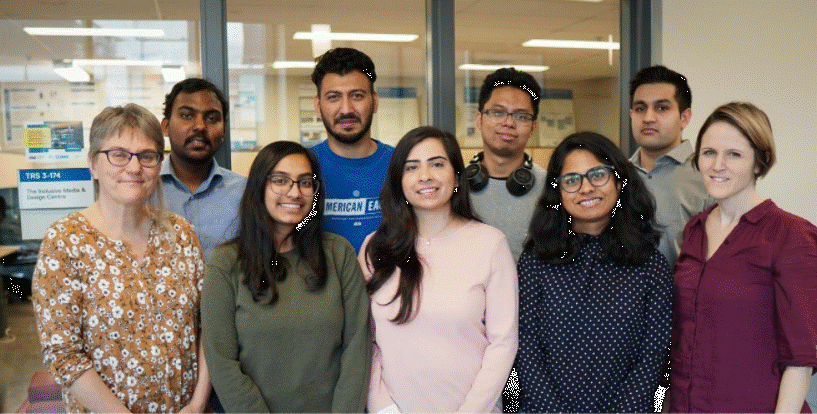
The 2019/2020 was a productive year that saw some new directions and exciting research. At Ryerson, Somang Nam (MSc) and Abidin Akkok continued their PhD work; Somang has successfully published his work in IEEE Transactions on computational social systems and began his last user study before completing his PhD. MScM students, Sara Mustafa and Tanzina Mahbub completed their course work and are now completing their theses. We welcomed a visiting scholar, Jia Zhao a film-maker from China who is working on accessible film-making. One research associated Shehnaz Fatima Lakha (former post-doctoral fellow) is continuing through 2020 and is working on a new project for MyHealthMyRecord in collaboration between Hadi Shojei at the Northern School of Medicine. One new masters student from Industrial Engineering at the University of Toronto, Rabia Tanvir began her masters in September 2019.
From a funding perspective, nine full funding grant proposals and four letters intent (LOI) were submitted to external funding agencies. One funding proposal from the Broadcast Accessibility Fund, one from the Accessible Technology fund, one from ARF Innovation fund, and one proposal from the Accessible Technology program were successful to date and two LOIs were selected to progress to the full proposal stage. Pending notifications include: two new Broadcast Accessibility fund, and one from the New Frontiers Innovation program. Notification for the pending funding proposals is expected in Fall 2020. All applications were with multiple partners. Fels was a lead on seven funding applications and two LOIs.
Publication rate was maintained at an excellent level with four journal articles published, and two submitted. Five conference papers were also accepted and presented at various conferences. The book that began in 2018/2019 remains under development but completion is expected by the end of 2020. All publications have student and collaboration partners as authors.
Fels is the Co-Chair of Young Researchers Consortium for ICCHP 2020. Fels participated in reviewing numerous grant, journal and conference submissions including NSERC, SSHRC, Age-Well, Universal Access to the Information Society (UAIS) Journal, Pattern Recognition and Analysis, CHI 2019, ICT4AGW (ICT for Aging Well). She is also on the editorial board for UAIS and has accepted a second editorial position for the JMIR Rehabilitation and Assistive Technologies. She was also been nominated as a fellow with the Royal Society of Canada.
Finally, technology transfer/knowledge mobilization activities for the IMDC were very busy. Fels also continued to sit on the Steering Committee for Understanding User Responses to Live Closed Captioning in Canada (since 2016). The IMDC continued the development, in partnership with Mediac Inc., a Canadian captioning tool that incorporates CEA708 functionalities into its modular design. Our current BAF funded project includes the use of this system as an educational tool for a continuing education course series at Ryerson. In addition, the NICKEL needs elicitation decision support prototype was completed, and is currently being applied in a medical context with SeeLogics India. We are currently in negotiations with an investor. We made various IMDC project presentations, including the WebMoti, Tecla 2.0, and MHMR, to Minister Duncan during a visit to Ryerson to celebrate Canada’s accomplishments in science and research. Lastly, the IMDC is participating in efforts by the American Council for the Blind in developing a certification process for audio describers; Dr. Fels continues in the role of co-chair of the Body of Knowledge sub committee. It is expected that the certification will be available in mid-2022.
For 2020/2021, there will be one new MASc student, Jenny Leung, beginning in September 2020. All students will be working on projects related to research funded by the various partners. Margot Whitfield returned from maternity leave in August 2020. MC Rombaut continued as the coordinator of and instructor for the Inclusive Media Course Series.
The impact of COVID-19 on the activities of the IMDC has been fairly significant particularly related to human participant testing. Although some of our user studies have been successfully migrated to a virtual environment, others are waiting for permission to conduct face-to-face studies.
A limited number of students requiring access to on-site technologies and resources have been permitted to return to the lab following the approved Safe SRC Plan and also all Toronto Public Health directives — including physical distancing, regular hand washing, and cleaning and sanitizing of work areas. Eight students have been permitted to physically work in the IMDC space on alternate days because there is hardware (mechanical and electrical) and software (Noldus Observer) that is only available there. Students were instructed on and followed Ryerson’s safety protocols.
Our new Course Series (with five courses in the course series) successfully launched this fall (see Figure 1) and garnished much publicity, including 2 articles in the Toronto Star. CDIM 100 Inclusive Media and Regulations ran 3 times, CDIM 101 Closed Captioning once, and CDIM 102 Audio Description twice throughout the fall/winter term. For more information visit our course website (opens in new window) . Our six advisory board meetings cluded in December 2019 with representation from AMI, Ai Media, University de Montreal, CNIB, Jenny Leung and Ryerson. Three bursaries (at $500 each) were reviewed by advisory and awarded in Fall 2019.
NER practice for certification exercises were added to CDIM 104 Audio Description Advanced, with the support of Joanne Pak, Official NER Certifier & Evaluator. We also updated our website to notify/educate students about NER certification as well as clarify/differentiate between our captioning courses and the certification process. Due to the outbreak of COVID 19 CDIM 104 Audio Description Advanced was not allowed to proceed as scheduled. COVID 19 Chang protocols also restricted the run of our intensive course series, which was set to run summer 2020.
